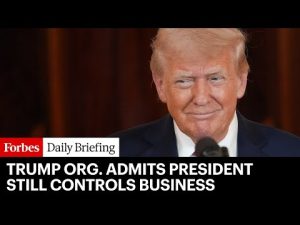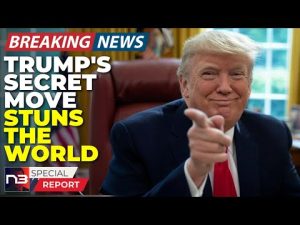In the latest episode of international diplomacy, U.S. officials are set to engage in critical trade talks with China this weekend in the neutral territory of Switzerland. This marks the first official meeting since President Trump’s bold move to implement tariffs on Chinese imports. The anticipation is palpable at the White House, with officials working hard to ensure that China comes to the table ready to discuss, without the U.S. offering any initial concessions on those hefty tariffs. It seems like this could be a pivotal moment in trade relations, billed as the most significant weekend since the metaphorical “liberation day” of global trade.
According to the White House correspondent, the preliminary agenda of these talks is largely focused on de-escalation of tensions. It’s not about crafting the ultimate trade deal yet, but rather setting the stage for more intense negotiations down the line. The art of diplomacy apparently includes a good amount of talking about what to talk about, but Rome wasn’t built in a day, and neither is a trade agreement with one of the world’s largest economic superpowers.
In the midst of all this, President Trump is gearing up for a high-stakes visit to the Middle East. Not to be outdone by mere trade talks, the Commander-in-Chief is promising a major announcement on a “very important subject” that has everyone guessing: will it be about trade, regional conflicts, or possibly about changing yet another international name as a capstone to his foreign policy tenacity? The suspense is a familiar Trump tactic, keeping both allies and adversaries on their toes, eagerly awaiting the next dramatic revelation.
Reports suggest that the Chinese economy is feeling the squeeze from these tariffs, which is what likely brought them to the negotiation table. Factory shut-downs and mass layoffs have led to public unrest, not exactly the picture of stability that China likes to project. Moreover, with millions of jobs hinging on exports to the U.S., it seems that China is slowly realizing that their economic art of war strategy might have hit a snag. People are protesting about wages and job security; meanwhile, China seems to be juggling a multitude of domestic issues that make them a less daunting adversary and more a beleaguered giant.
As the trade titans prepare for their diplomatic dance in Switzerland, there’s no shortage of challenges for both sides. For China, it’s about managing public discontent and a slowing economy. For the U.S., it’s about leveraging this moment of advantage without spooking the global markets or overplaying their hand. Can they find a balance that will stabilize markets and benefit both economies? That remains to be seen, but one thing’s for sure: whatever President Trump announces next, it will make waves, if not exactly the kind that one surfs on with ease. Let’s hope that wave doesn’t sweep up any unexpected debris.







